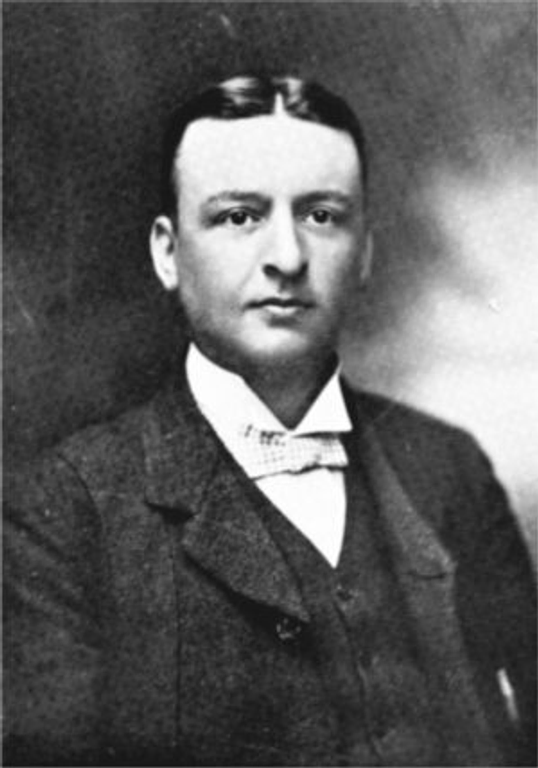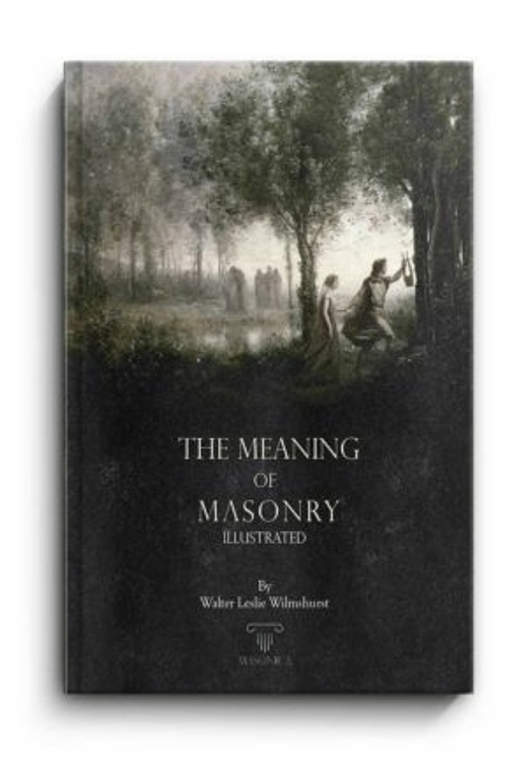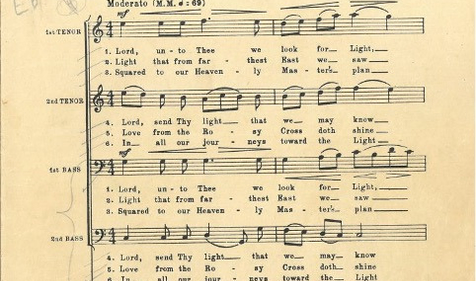Walter Leslie Wilmshurst was an English author, lawyer, and Freemason, who famously wrote “The Meaning of Masonry” (1922) and “The Masonic Initiation” (1924).

One of the most compelling aspects of Freemasonry for many is the mysticism that surrounds the Craft. It’s hard to find another Mason who revered the esotericism of Freemasonry as much as Walter Leslie Wilmshurst, an English author who dedicated much of his life to researching, writing, and expanding his own knowledge of Freemasonry.
Who is Walter Leslie Wilmshurst?
Walter Leslie Wilmshurst was an English author, lawyer, Freemason, and connoisseur of esotericism. Born on June 22, 1867 in Chichester, England. At the age of 15, he moved to Huddersfield, Yorkshire to work as a solicitor, a career he would practice until his passing in 1939.
Brother Wilmshurst is most famously known for his prolific books and essays about Freemasonry, as well as for his successful efforts in promoting the study of the esoteric meaning of Freemasonry.
A Masonic Philosopher
At age 22 on February 5th, 1890, Brother Wilmshurst was initiated as a Master Mason at the Huddersfield Lodge No. 290 where he began his lifelong journey of Masonic scholarship.
Core to Brother Wilmshurt’s beliefs about Freemasonry was the notion that many Masons did not understand the true purpose of Masonic rituals and, as such, were missing an opportunity to use the teachings of the Craft as a tool for spiritual regeneration. His passion for promoting the deeper meaning of Freemasonry led him to becoming a profound Masonic scholar, philosopher, and author.
He famously wrote and published numerous books in his lifetime including The Meaning of Masonry (1922) and The Masonic Initiation (1924). His first best-selling book, The Meaning of Masonry, included a collection of essays from Wilmshurst that sought to demonstrate that Freemasonry has a higher calling than fellowship and charity. The book examines the beliefs behind the Craft, rites and symbols, and Freemasonry’s ultimate purpose. His first book, which came at a time of pivotal growth and transformation for Freemasonry, was received with high acclaim and still today, has helped Masons reflect on the deeper purpose and meaning behind the symbols of the Craft.
“The purpose of Initiation may be defined as follows: – it is to stimulate and awaken the Candidate to direct cognition and irrefutable demonstration of facts and truths of his own being about which previously he has been either wholly ignorant or only notionally informed; it is to bring him into direct conscious contact with the Realities underlying the surface-images of things, so that, instead of holding merely beliefs or opinions about himself, the Universe and God, he is directly and convincingly confronted with Truth itself; and finally it is to move him to become the Good and the Truth revealed to him by identifying himself with it.” - The Meaning of Masonry

He soon followed the success of The Meaning of Freemasonry with a sequel, The Masonic Initiation, which continued Brother Wilmshurst’s efforts to explore the depth and higher purpose of Masonic rituals, as well as his vision for the future of Freemasonry. Prominent modern-day Masonic author Robert G. Davis writes that The Masonic Initiation "has induced many generations of Masons to feel that, when they are in the sacred space of lodge, they are in the presence of a mystery that goes to the root of their own being."
Following the publication of his first two books, Brother Wilmshurst went on to publish other Masonic books and essays, both on his own and through the Occult Review, such as “The Mystical Basis of Freemasonry,” "The Working Tools of an Old York Master," The Ideal Masonic Lodge and The Ceremony of Passing, among many others.
Wilmshurst's style of writing, highly formal and typical of his Victorian education, can make him a difficult read for modern Masons. Fortunately, many Masonic scholars, like Robert Lomas, have provided annotated editions to make Brother Wilmshurt’s philosophies on the Craft more attainable for Master Masons of today.
Promoting Symbolism, Reflection, and Esotericism
Brother Wilmshurst was deeply committed to the Craft; he belonged to Huddersfield Lodge No.290, Lodge of Harmony No. 275 and held various leadership positions in his Masonic career. He became Provincial Senior Grand Warden of West Yorkshire in 1926, and in 1929 he was appointed Assistant Grand Director of Ceremonies of the United Grand Lodge of England. However, no leadership endeavor from Wilmshurst has been quite as impactful to the Craft as his role in the Lodge of Living Stones.

In 1927, Brother Wilmshurst founded The Lodge of Living Stones
in Leeds, England. The lodge was founded purely to promote the study of the meaning behind Masonic ritual and symbolism. He became the first Worshipful Master of the Lodge, which still exists in English Freemasonry today and serves as an important reminder of the deeper purpose and mission we, as Masons, strive for when we first entered the Lodge room.
In his initiation as WM, Wilmshurst wrote about the purpose and aims of the Lodge:
“This lodge has been formed to meet a demand that nowadays is increasingly heard in the Craft for a fuller understanding and realisation of the latent teachings of our Order than usually obtains. It is our design to try to meet the need of a growing minority of brethren who are not content with the routine formalities and social amenities of their lodges, but feel that the Craft was intended to mean more than this and who are eager to learn what that ‘more is.”
The Lodge has initiated very few Candidates in its 90 years but still meets regularly and frequently to promote the deeper interpretation of the Craft ceremonies.
Inspired by the Craft
In total, Brother Wilmshurst published four books and 10 articles/essays on Freemasonry. While many famous Masons' accomplishments are often seen as separate from Freemasonry, Brother Wilmshurst’s legacy is directly intertwined with Freemasonry. To Brother Wilmshurst, being a Mason was much more than attending a Lodge meeting. He sought to uncover the deeper meaning of our Craft and worked to promote a higher calling in our work in and outside the Lodge. Although he wasn’t a member of the Scottish Rite, he embodies what the Scottish Rite stands for today - finding greater meaning and a higher sense of purpose through in-depth exploration of the Craft and ourselves.
Walter Leslie Wilmshurst died in Huddersfield on July 10, 1939. Upon his passing, J.S.M. Ward wrote in his obituary for the Masonic Study Society in 1939:
“It is as an exponent of the mystical meaning of Freemasonry that he will ever be remembered […] Masonic scholars and students sometimes allow their zeal for their pet theories to out-run the brotherly affection they should feel for their fellow masons, but not so Wilmshurst. I never remember him saying a harsh or unkind word about any other masonic authority, however much his opinions might differ, and it was remarkable how he managed to win the affection of all who truly knew him.”
Related Stories
Discover additional Scottish Rite blogs and news on this topic.



